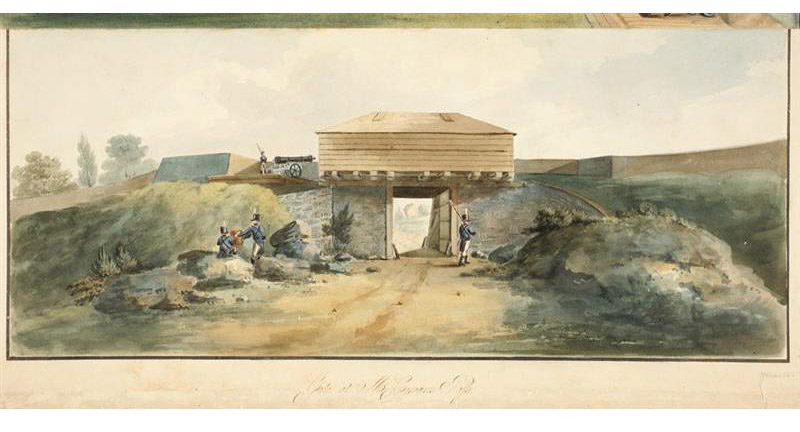John Joseph Holland was an English-born architect and watercolorist who settled in New York and drew most of the first-hand depictions we have of the Fort Clinton and McGowan’s Pass area in the early 1800s. This is his watercolor of the gatehouse in the Pass.

Let’s see where we are. A look at the central guardsman’s shadow tells us that we are facing east (actually east-northeast, if the maps of the time are right). We are supposedly on the old Post Road, between the lines of 106th and 107th Streets, with McGowan’s Hill to our rear. The wall on the right leads up to Fort Clinton, the defenses on the left go down to Nutter’s Battery near the western end of today’s Harlem Meer.
When Central Park’s East Drive was built here in the 1860s, it followed the line of the foreground road very closely up to the old site of the gatehouse. Then the Drive turned sharply to the west and southwest, alongside the old fortifications, in order to avoid running into the new Meer.
If you know this part of East Drive, you know this whole route is a downhill grade. So our foreground road must have been raised some 15 or 20 feet (no doubt with dredgings from the Harlem Meer) in order to meet the level of the earth-banks on the left.

Pingback: The Pass and Gatehouse in Harlem, 1814 |